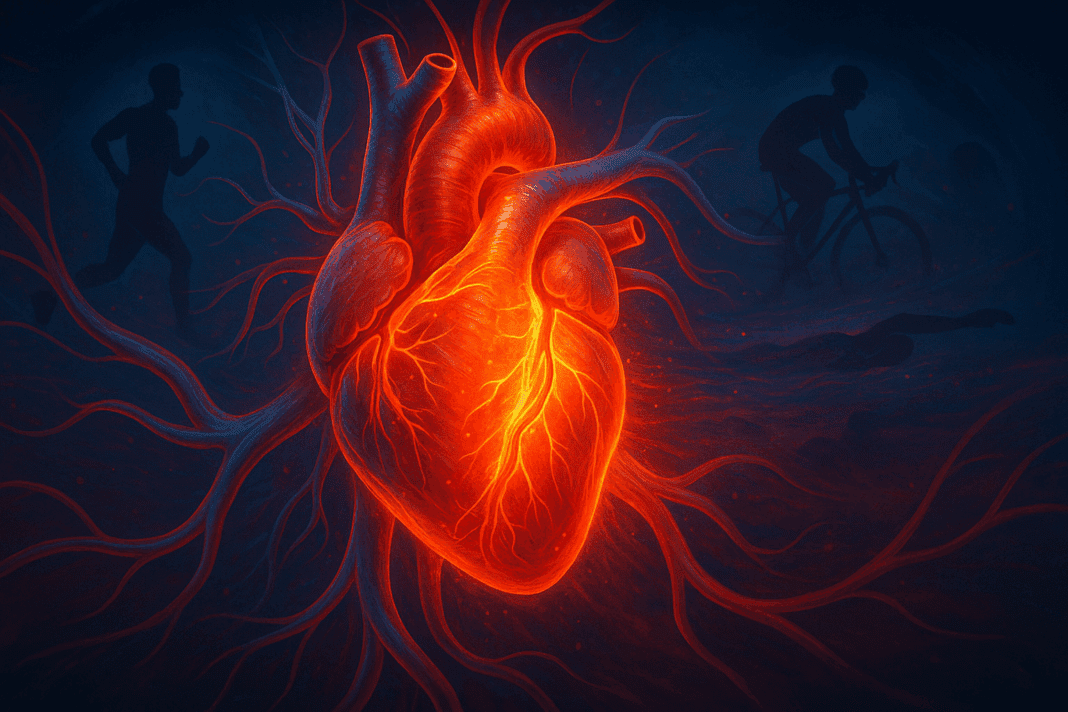The modern pursuit of health and performance enhancement has turned a spotlight toward the cardiovascular system—a complex, dynamic network essential for life and movement. At the heart of this conversation lies the intersection between endurance training and cardiovascular disease (CVD). While it is often stated that all cardiovascular diseases are caused by poor lifestyle choices, this oversimplification masks a much more nuanced reality. The truth is that heart health is influenced by a multifaceted interplay of genetic, behavioral, and environmental factors. In this article, we explore what causes cardiovascular disease and heart problems, identify modifiable and nonmodifiable risk factors, and examine how smart endurance training can serve as both prevention and performance enhancement.
You may also like: Smart Nutrition Choices for a Healthier Lifestyle: What to Know About Whole Grain Rice and Whole Wheat Rice
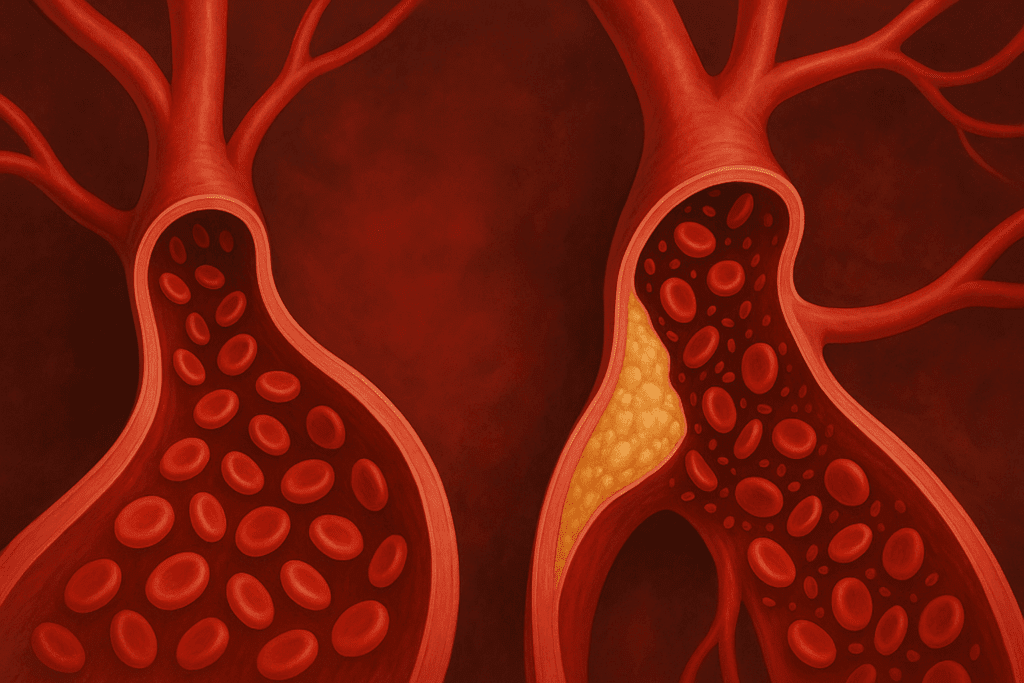
Understanding What Causes Cardiovascular Disease
Cardiovascular disease remains the leading cause of death globally. The phrase “what causes cardiovascular disease” encompasses a broad array of biological and behavioral elements. Key cardiovascular disease risk factors include hypertension, high cholesterol, smoking, obesity, physical inactivity, and poor dietary choices. Genetics and age are also significant, but these uncontrollable CVD risk factors do not negate the power of lifestyle intervention. Rather, they underscore the importance of identifying what factors cause heart disease and how to address them early.
One of the most persistent myths is that all cardiovascular diseases are caused by poor lifestyle choices. While lifestyle plays a major role, it’s important to distinguish between what is preventable and what is not. Some individuals may be genetically predisposed due to inherited conditions such as familial hypercholesterolemia. This means asking “how do you get CVD?” isn’t always answered by behavior alone. However, knowing which of the following are risk factors for cardiovascular disease empowers individuals to take informed action. Medical literature repeatedly confirms that a substantial proportion of cases stem from modifiable behaviors—particularly those affecting weight, diet, and physical activity.
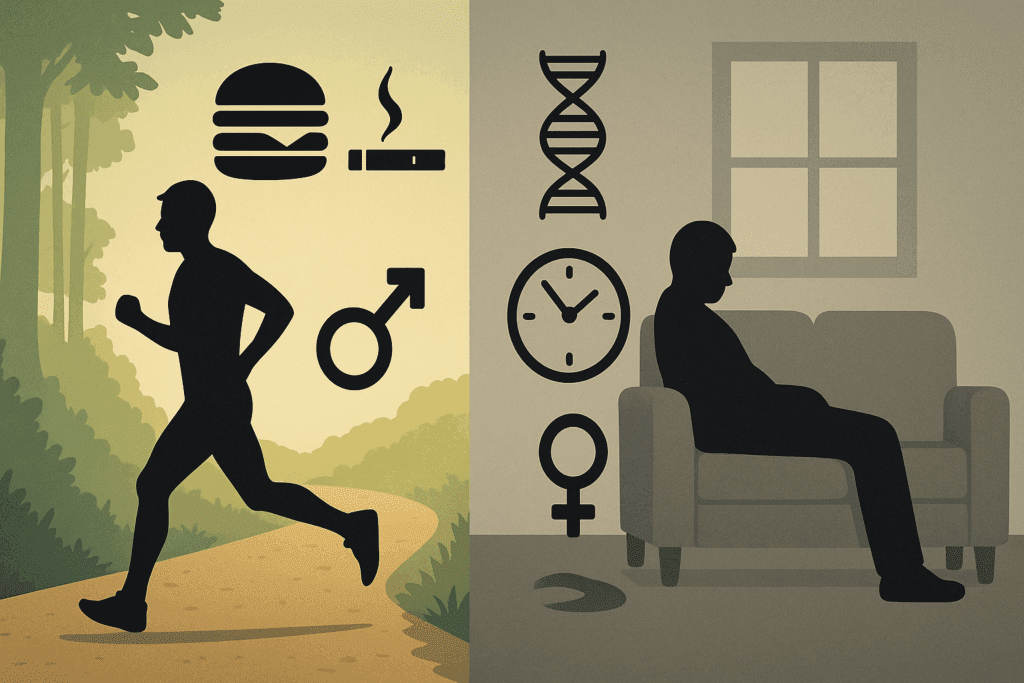
Modifiable and Non modifiable Risk Factors for Cardiovascular Disease
To understand cardiovascular risk, one must distinguish between modifiable and nonmodifiable risk factors for cardiovascular disease. Modifiable risk factors are those within our control, such as smoking, sedentary behavior, poor nutrition, and unmanaged stress. Uncontrollable risk factors for cardiovascular disease include age, sex, ethnicity, and genetic predisposition. These classifications are not meant to discourage but rather to focus our efforts strategically. Identifying what contributes to heart disease through behavioral change has helped countless individuals lower their cardiovascular risk and improve quality of life.
Among the most frequently cited CVD risk factors, physical inactivity is particularly striking. In today’s technologically driven world, sedentary lifestyles are more common than ever. This dramatically increases risk of heart disease, especially when paired with poor dietary habits and stress. In contrast, individuals who engage in regular physical activity—especially endurance-based training—see a marked improvement in nearly every marker associated with cardiovascular disease risk. This includes blood pressure, cholesterol, insulin sensitivity, and body composition.

How It Works: Factors of the Cardiovascular System in Endurance
Understanding how it works—factors of the cardiovascular system—during endurance training provides critical insight into why exercise is protective against heart disease. When engaged in sustained aerobic activity, the heart becomes more efficient. Stroke volume increases, resting heart rate decreases, and arterial elasticity improves. These physiological adaptations help reduce heart attack risk factors by strengthening the heart muscle and promoting better circulation.
What causes heart disease in many people is a lack of this adaptation. Without exercise, the cardiovascular system becomes sluggish, and blood vessels lose their flexibility. This makes it easier for plaque to build up, a process accelerated by smoking, poor diet, and stress. Smoking is an uncontrollable risk factor only in the sense that past exposure can’t be undone; however, cessation at any stage leads to measurable improvements. The positive changes induced by endurance training address both the symptoms and root causes of heart problems. Over time, consistent aerobic activity remodels the heart’s structure, improves oxygen transport, and reduces inflammation—a significant contributor to cardiovascular risk.
Challenging the Notion That All Cardiovascular Diseases Are Caused by Poor Lifestyle Choices
The claim that all cardiovascular diseases are caused by poor lifestyle choices oversimplifies a complex spectrum of diseases. Congenital heart conditions, autoimmune vasculitis, and even certain types of cardiomyopathy develop independent of lifestyle. Still, lifestyle is often the tipping point for latent risks. For example, someone genetically predisposed to hypertension may remain symptom-free until poor sleep, high salt intake, and inactivity trigger disease onset. This interdependence between controllable and uncontrollable CVD risk factors complicates the idea of prevention but also opens doors to nuanced intervention.
What are the six main risk factors for cardiovascular disease? They typically include smoking, hypertension, elevated cholesterol, obesity, physical inactivity, and diabetes. These are often modifiable with the right guidance. Asking “what are some risk factors for cardiovascular disease?” means accepting that while we cannot change everything, we can influence many critical outcomes. Education, personalized health plans, and structured fitness regimens—particularly those emphasizing endurance—can create meaningful transformation.

The Role of Endurance Training in Reducing CVD Risk
Smart endurance training offers a proactive solution to managing CV risk and enhancing performance. Activities such as running, cycling, swimming, and brisk walking stimulate cardiovascular efficiency, promote fat oxidation, and support long-term heart resilience. By addressing what causes heart problems through regular exercise, individuals can modify key markers such as triglyceride levels, inflammation, and glycemic control.
Studies consistently show that endurance athletes have a lower incidence of CVD risk factors, even when accounting for age and genetics. What leads to heart disease is often a failure to meet the minimal threshold of physical activity needed for vascular health. The World Health Organization recommends at least 150 minutes of moderate-intensity aerobic exercise weekly. Meeting or exceeding this standard helps regulate blood pressure, supports endothelial function, and lowers overall cardiovascular disease risk factors.
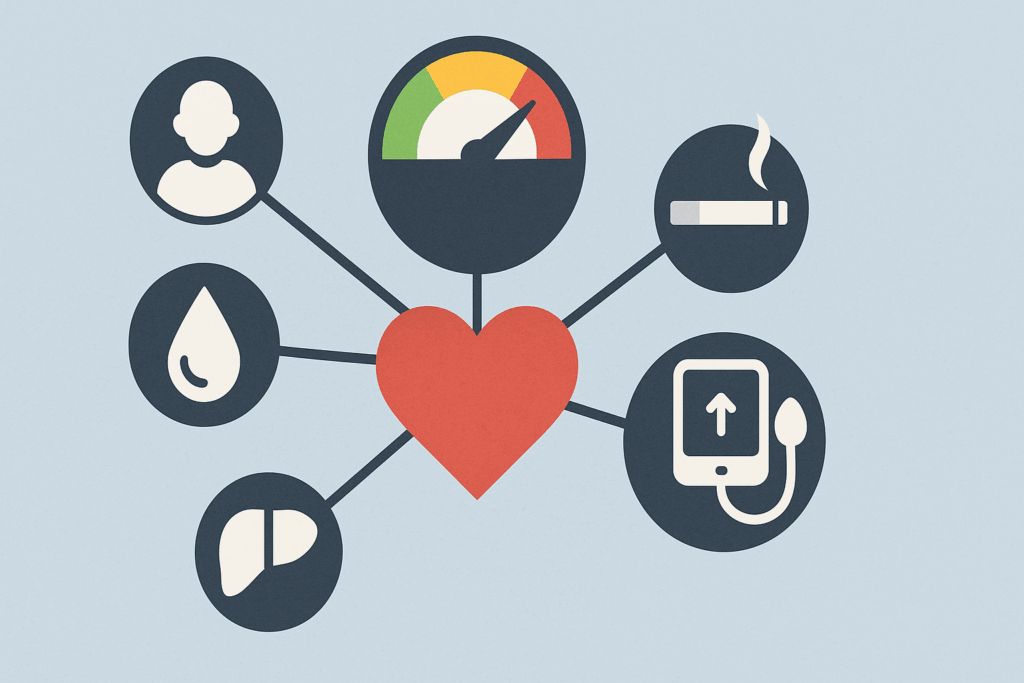
What Is CV Risk and How Can It Be Measured?
The term “CV risk” refers to the probability of developing cardiovascular disease within a given timeframe, typically 10 years. Tools such as the Framingham Risk Score or ASCVD Risk Calculator are used by clinicians to estimate this likelihood. These tools factor in age, sex, cholesterol levels, blood pressure, diabetes status, and smoking habits. Understanding what is CV risk is not just about percentages; it’s about identifying leverage points where action can make a difference.
What are causes of CVD? While some are intrinsic and unavoidable, others are entirely within our power to change. Controllable risk factors for heart disease include dietary habits, alcohol intake, and exercise consistency. Recognizing what is not one of the risk factors for CVD is just as important for public understanding. For instance, mild caffeine consumption or occasional stress is often mistaken for a major trigger when in fact their role is minimal compared to systemic inflammation or chronic sedentary behavior.
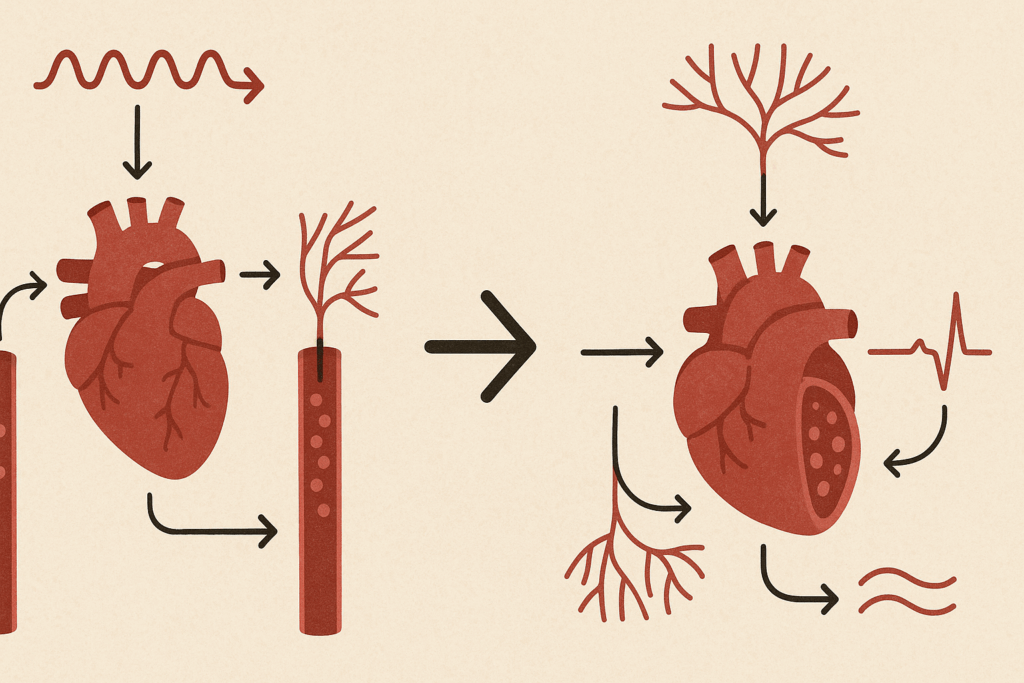
Cardiovascular Adaptations from Smart Fitness Practices
One of the most remarkable outcomes of smart endurance training is the remodeling of the cardiovascular system. Through sustained effort, the left ventricle enlarges, capillary density increases, and mitochondrial function improves. These adaptations directly counteract heart attack risk factors and enhance the heart’s capacity to handle stress.
What are some risk factors for heart disease that endurance training can specifically mitigate? These include high LDL cholesterol, insulin resistance, systemic inflammation, and poor vascular tone. The body becomes more efficient at clearing lipids from the blood, stabilizing glucose, and reducing oxidative damage. Endurance training also elevates HDL cholesterol, which serves as a scavenger for arterial plaque. By integrating physical activity that is both consistent and progressive, the body transitions from a state of metabolic risk to one of resilience.
How Do You Get CVD? Understanding the Multifactorial Origins
When people ask “how do you get CVD?” they often seek a singular answer, but cardiovascular disease rarely results from one cause. Instead, it is the accumulation of behavioral missteps, environmental stressors, and genetic tendencies over time. What factors cause heart disease may differ from one person to another, yet patterns emerge. A diet high in saturated fat and sugar, combined with little physical activity and chronic stress, significantly increases risk of heart disease.
Importantly, social determinants of health must be part of this conversation. Economic insecurity, food deserts, and lack of access to safe exercise spaces can amplify cardiovascular risk. These conditions create environments where even the most motivated individuals struggle to mitigate what are some risk factors for heart disease. The most effective interventions address not only the behavior but also the context in which that behavior occurs.

What Leads to Heart Disease: The Interplay of Biology and Behavior
What leads to heart disease is not just a sedentary lifestyle or a fatty diet, but the complex feedback loops between biology and behavior. Someone with a genetic predisposition to high blood pressure may respond dramatically to lifestyle change, while another may require medication regardless of effort. This does not minimize the importance of fitness but rather reinforces the value of tailoring interventions.
The question of what are the six main risk factors for cardiovascular disease is often answered in static lists, but real-world application demands personalization. Endurance training is not one-size-fits-all. Training intensity, duration, and frequency should be matched to an individual’s health profile, risk level, and performance goals. When applied intelligently, smart fitness becomes a therapeutic tool, not just a preventive measure.
Smoking, Inflammation, and the Myth of the Uncontrollable Risk Factor
It is often said that smoking is an uncontrollable risk factor, but this is a misunderstanding of language more than science. While past exposure to smoking cannot be undone, quitting dramatically reduces cardiovascular risk at any stage. In fact, within one year of smoking cessation, the risk of heart disease drops significantly. Labeling it as an uncontrollable CVD risk factor may discourage action when the data suggest otherwise.
Inflammation, another under-discussed topic, plays a central role in what causes cardiovascular disease. Chronic low-grade inflammation promotes endothelial dysfunction, plaque formation, and arterial stiffness. Endurance exercise counters these mechanisms by reducing pro-inflammatory cytokines and increasing nitric oxide production. These shifts help control what contributes to heart disease on a molecular level. The message is clear: even partial improvements in physical activity patterns yield substantial dividends for heart health.
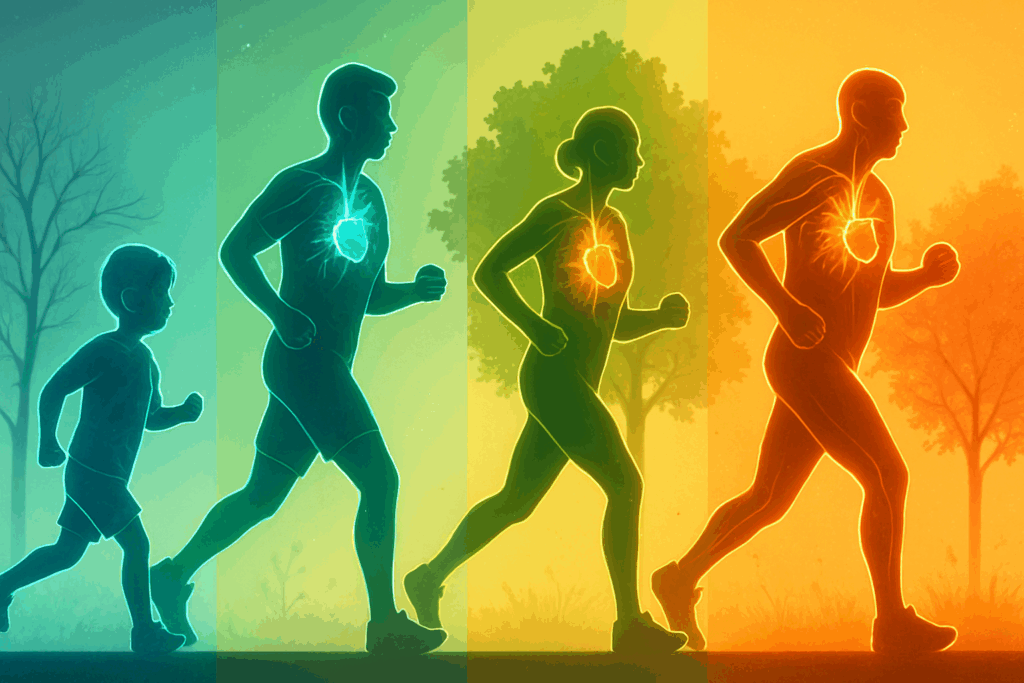
The Long-Term Impact of Smart Fitness on Cardiovascular Resilience
What is CV risk over a lifetime? It is a summation of daily habits, genetic background, and cumulative exposures. Cardiovascular resilience—the ability of the heart and vessels to recover from stress and resist disease—is not built overnight. However, endurance training steadily enhances this resilience by increasing metabolic efficiency, vascular flexibility, and autonomic balance.
What causes heart disease can shift over time as one ages or undergoes hormonal changes. What worked at 30 may need to be adjusted at 60. The key is continuity. Lifelong endurance training, even at moderate levels, improves heart rate variability and lowers resting blood pressure. These adaptations not only reduce risk factors for cardiovascular disease but also improve quality of life.
Frequently Asked Questions: Endurance Training and Cardiovascular Disease Risk
1. Can endurance training help even if I have a family history of heart disease?
Absolutely. While genetic predisposition is one of the uncontrollable CVD risk factors, endurance training can significantly mitigate overall cardiovascular risk. Family history may increase risk of heart disease, but consistent aerobic activity helps improve vascular function, reduce inflammation, and enhance metabolic efficiency. This means that even if you’re born with certain cardiovascular disease risk factors, your lifestyle choices play a powerful role in altering their impact. Understanding how it works—factors of the cardiovascular system that adapt through endurance training—shows how exercise can buffer against inherited weaknesses. It’s also important to remember that what causes cardiovascular disease is rarely just one factor, but rather a cumulative effect of multiple influences over time.
2. Why do some people still develop heart disease despite being active and eating well?
While lifestyle has a profound effect on CVD risk, there are scenarios where cardiovascular disease still develops due to nonmodifiable elements. This underscores the reality that not all cardiovascular diseases are caused by poor lifestyle choices. Some individuals may have congenital defects, autoimmune conditions, or inherited lipid disorders that predispose them regardless of healthy behavior. The interaction between modifiable and nonmodifiable risk factors for cardiovascular disease complicates simple cause-and-effect narratives. Nevertheless, maintaining an active lifestyle still reduces the severity and progression of symptoms when these conditions are present.
3. How can endurance training address the six main risk factors for cardiovascular disease?
What are the six main risk factors for cardiovascular disease? They generally include smoking, hypertension, high cholesterol, physical inactivity, obesity, and diabetes. Smart endurance training addresses these by improving insulin sensitivity, reducing body fat, enhancing lipid profiles, and stabilizing blood pressure. Moreover, regular aerobic exercise influences how the cardiovascular system regulates itself during rest and stress—which directly reduces cardiovascular risk. Even if smoking is an uncontrollable risk factor in the sense that past exposure can’t be undone, current exercise habits can still offset long-term damage.
4. Is it possible to develop cardiovascular disease even with no obvious risk factors?
Yes, and this is why clinical screening remains essential. While the question “what causes cardiovascular disease” is often answered with a list of behavioral factors, silent or subclinical conditions like arterial inflammation or genetic arrhythmias may still increase risk of heart disease. This makes regular testing for cholesterol, blood pressure, and cardiac biomarkers particularly important. The issue is not whether cardiovascular disease risk factors are visible, but whether they are being proactively monitored. In some cases, what leads to heart disease may not manifest until later in life when resilience has declined.
5. What is the most overlooked controllable risk factor for heart disease?
Chronic stress is one of the most underestimated controllable risk factors for heart disease. While many focus on diet and exercise, unmanaged stress contributes significantly to systemic inflammation, which is a key player in what causes heart problems. Over time, elevated cortisol levels can impact blood pressure, glucose regulation, and even visceral fat accumulation. Incorporating endurance training into daily life not only improves physical health but also acts as a buffer against stress-induced damage. Understanding what contributes to heart disease in the modern world means considering not just physical but also psychological inputs.
6. Can athletes be at risk for heart problems despite regular training?
Yes. Although endurance training reduces many CVD risk factors, excessive training without adequate recovery may cause its own cardiovascular complications. For example, long-term high-intensity endurance sports can sometimes lead to atrial fibrillation or myocardial fibrosis in predisposed individuals. This does not negate the benefits of training but illustrates that what causes heart problems is also influenced by intensity, recovery, and individual thresholds. The balance between effort and rest is essential to avoid tipping the scales from benefit to risk. Therefore, the most effective training approach considers both performance and heart safety.
7. How does smoking fit into the risk picture for cardiovascular disease?
Many people assume that smoking is an uncontrollable risk factor, but this interpretation can be misleading. While you can’t change past smoking behavior, quitting at any stage still reduces cardiovascular risk. In fact, just one year after quitting, your heart attack risk factors begin to drop substantially. This illustrates how smoking, though often viewed as static, is still a modifiable element in many cases. Knowing what are causes of CVD must include both current and historical habits, and how they interact with ongoing choices like exercise and diet.
8. Is cardiovascular risk reversible through lifestyle change alone?
In many cases, yes. For individuals with elevated but not advanced CVD risk factors, lifestyle interventions such as endurance training, dietary changes, and stress reduction can significantly reverse early pathology. What is CV risk today can look very different in five years if actionable steps are taken. For instance, mild arterial plaque may regress with weight loss and cholesterol improvement. However, it’s critical to individualize treatment and combine lifestyle with medical care when necessary.
9. Why is endurance training particularly effective compared to other exercise types?
Endurance training uniquely conditions the cardiovascular system to handle sustained stress, improving stroke volume, capillary density, and mitochondrial function. These adaptations address what factors cause heart disease on both a metabolic and structural level. Unlike strength training, which is anaerobic and short in duration, endurance exercise requires the heart and lungs to coordinate continuously. This enhances how it works—factors of the cardiovascular system that protect against chronic disease. It’s not the only exercise that supports heart health, but it provides the most comprehensive cardiovascular conditioning.
10. What are the benefits of understanding specific CVD risk factors rather than generalizing?
Identifying specific cardiovascular disease risk factors allows for targeted prevention and more personalized care. Rather than assuming all cardiovascular diseases are caused by poor lifestyle choices, understanding individual triggers leads to better outcomes. For example, knowing that someone has familial hypercholesterolemia changes the approach entirely compared to someone with stress-induced hypertension. This granular understanding helps clarify which of the following are risk factors for cardiovascular disease that need intervention now, and which can be managed over time. It also ensures that treatment is proactive rather than reactive, improving long-term cardiovascular outcomes.
Conclusion: Embracing Smart Endurance Training to Lower Cardiovascular Risk and Boost Performance
Cardiovascular health is not a binary of disease versus no disease; it is a continuum influenced by countless choices made daily. While not all cardiovascular diseases are caused by poor lifestyle choices, many are significantly shaped by them. Understanding what causes cardiovascular disease requires a look beyond the surface, delving into the intricate connections between behavior, environment, and biology. Through strategic endurance training and informed lifestyle adjustments, individuals can dramatically reduce cardiovascular disease risk factors and optimize physical performance.
The most actionable insight lies in recognizing the modifiable and nonmodifiable risk factors for cardiovascular disease, and then aligning fitness efforts accordingly. By addressing what are some risk factors for cardiovascular disease through a personalized endurance regimen, people can lower their CV risk, slow disease progression, and even reverse early markers of damage. This is not about extreme athleticism, but about consistency, intention, and evidence-based intervention. In a world where cardiovascular risk remains a leading health concern, smart endurance training stands as one of the most powerful tools we have to shape a healthier future.
Was this article helpful? Don’t let it stop with you. Share it right now with someone who needs to see it—whether it’s a friend, a colleague, or your whole network. And if staying ahead on this topic matters to you, subscribe to this publication for the most up-to-date information. You’ll get the latest insights delivered straight to you—no searching, no missing out.
Further Reading:
Strength Training for Heart Health: Reducing Cardiovascular Risks
Endurance exercise and resistance training in cardiovascular disease
Impact of exercise training on cardiovascular disease and risk☆
Disclaimer
The information contained in this article is provided for general informational purposes only and is not intended to serve as medical, legal, or professional advice. While NewsHealthWatch strives to present accurate, up-to-date, and reliable content, no warranty or guarantee, expressed or implied, is made regarding the completeness, accuracy, or adequacy of the information provided. Readers are strongly advised to seek the guidance of a qualified healthcare provider or other relevant professionals before acting on any information contained in this article. NewsHealthWatch, its authors, editors, and contributors expressly disclaim any liability for any damages, losses, or consequences arising directly or indirectly from the use, interpretation, or reliance on any information presented herein. The views and opinions expressed in this article are those of the author(s) and do not necessarily reflect the official policies or positions of NewsHealthWatch.

